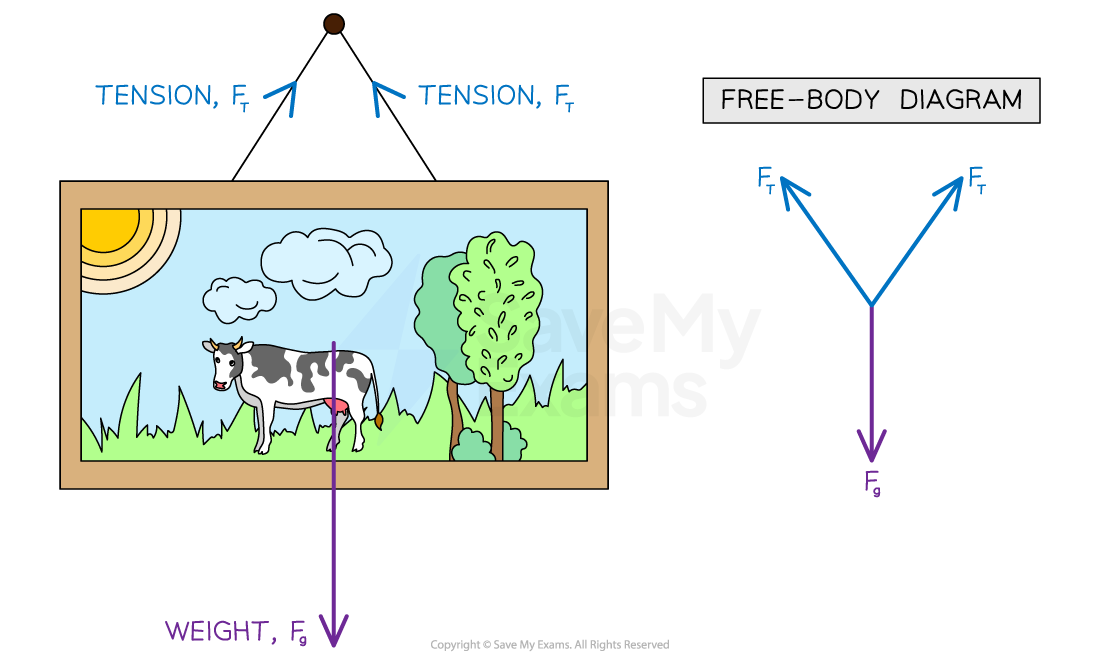Translational Equilibrium (College Board AP® Physics 1: Algebra-Based): Study Guide
Translational equilibrium
Translational equilibrium is defined as
A configuration of forces such that the net force exerted on a system is zero
Stationary object
We know that if there is no net force acting on an object then there is no change in the object's motion
Therefore a stationary object remains stationary
Vectors can be added together using a vector sum
The force vectors acting on a picture modeled as a hanging object are:
Tension is the macroscopic net result of forces that segments of the string exert on each other in response to an external force
The weight exerted on the object by the gravitational field strength,
Translational equilibrium of a stationary hanging object

When an object is stationary, the force vectors acting on the object are arranged using the tip-to-tail method so that the vector sum is equal to zero
Force diagram of a stationary hanging object

Moving objects
If there is no net force acting on an object, then there is no change in the object's motion
Therefore, a moving object remains moving at a constant velocity in the same direction
This means the force vectors acting on the object are also arranged using the tip-to-tail method so they combine to equal zero
The force vectors acting on the object are:
The weight exerted on the object by the acceleration due to gravity,
The friction exerted on the object due to the interaction between the object and the surface of the slope
The normal force is the perpendicular component of the force exerted on an object by the surface with which it is in contact; it is directed away from the surface.
Translational equilibrium of a moving object at a constant velocity

When an object is moving at a constant speed, the force vectors acting on the object are arranged using the tip-to-tail method so that the vector sum is equal to zero
Force diagram of a moving object at a constant velocity

Derived equation
A configuration of forces such that the net force exerted on a system is zero
Derivation:
Step 1: Identify the fundamental principle
Newton's second law is given by:
Where:
= net force exerted on the system, in
= mass of the system, in
= acceleration of the system, in
Step 2: Apply the specific conditions
When an object is in transitional equilibrium, it is either at rest or moving with a constant velocity
As there is no change in velocity, acceleration is zero,
= 0
The equation for net force becomes:
To maintain transitional equilibrium, the sum of the forces exerted on the system must equal zero:
Worked Example
An object is acted on by three forces one of magnitude 5 N acting downwards, one of magnitude 4 N acting to the right and a third P N acting at an angle to the vertical as shown in the diagram.


Identify the diagram that shows the object is in translational equilibrium.
Answer:
Step 1: Identify properties of a force diagram that show an object in translational equilibrium
An object in translational equilibrium will have a force triangle that shows the force vectors arranged tip to tail
Step 2: Identify the correct answer option
When following the force vectors in a counterclockwise direction from the top point in the force triangle:
Each arrow is pointing in the counterclockwise direction
Hence this is answer option D

You've read 0 of your 5 free study guides this week
Unlock more, it's free!
Did this page help you?